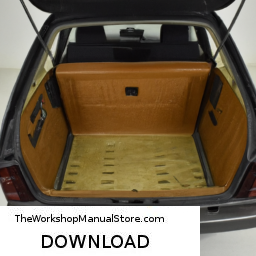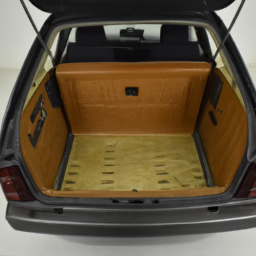
Replacing the clutch plate on a BMW 320 E21 3 Coupe can seem daunting, especially if you have little mechanical experience. go here for more information on the download manual…..
- The BMW E21 320i is the Very First and Most Underrated 3-Series Most people reminisce on the days BMW built it’s iconic E30 3-series, however the BMW E21 that came before it is truly an …
- BMW MISDIAGNOSED costs thousands in unnecessary repairs???????????????… Most common misdiagnosis by mechanics who are not familiar with BMWs, here is a step by step guide on how to replace oil filter …
However, with some patience and the right tools, it can be accomplished. Here’s a simplified step-by-step guide:
### Tools and Materials Needed
– **Tools**:
– socket set (metric)
– Wrenches
– Screwdrivers (flathead and Phillips)
– Torque wrench
– clutch alignment tool (often comes with a new clutch kit)
– Jack and Jack stands
– Brake cleaner
– Engine oil (for the gearbox if needed)
– **Materials**:
– New clutch kit (includes clutch plate, pressure plate, and release bearing)
– New transmission fluid (if needed)
### Steps to Replace the clutch Plate
#### 1. Prepare the Vehicle
– **Safety First**: Park the car on a flat surface and engage the parking brake.
– **Disconnect the Battery**: Remove the negative terminal to prevent any electrical issues.
#### 2. Lift the Car
– Use a Jack to lift the front of the car and secure it with Jack stands. Make sure it’s stable before you crawl underneath.
#### 3. Remove the Transmission
– **Access the Clutch**: You’ll need to remove the drive shaft and the transmission to access the clutch.
– Disconnect the drive shaft: Look for bolts connecting it to the differential and carefully remove them.
– Remove the transmission: Start by removing the bolts that secure the transmission to the engine. You may also need to disconnect the shift linkage and any electrical connections.
#### 4. Remove the Old Clutch
– **Unbolt the Pressure Plate**: Once the transmission is out, you will See the clutch assembly. Remove the bolts holding the pressure plate to the flywheel.
– **Take Off the Pressure Plate**: Carefully pull the pressure plate off, followed by the clutch plate. Note the orientation of the clutch plate for easier installation later.
#### 5. Install the New Clutch
– **Clean the Flywheel**: Use brake cleaner to clean the surface of the flywheel where the clutch plate contacts.
– **Install the New clutch Plate**: Align the new clutch plate with the flywheel. Use the clutch alignment tool to ensure it’s centered.
– **Add the Pressure Plate**: Place the pressure plate over the clutch plate and bolt it down evenly in a star pattern to ensure it sits flat.
and bolt it down evenly in a star pattern to ensure it sits flat.
#### 6. Reassemble the Transmission
– **Reattach the Transmission**: Carefully align and reattach the transmission to the engine. Ensure that it fits snugly and that all bolts are secured.
– **Reconnect the Drive Shaft**: Reattach the drive shaft to the differential, making sure all bolts are tight.
#### 7. Lower the Vehicle
– Remove the Jack stands and lower the car back to the ground.
#### 8. Reconnect the Battery
– Reconnect the negative battery terminal.
#### 9. Test the Clutch
– Start the car and gently test the clutch. Make sure it engages and disengages smoothly.
### Final Tips
– **Take Your Time**: Don’t rush through the steps. It’s important to do each step carefully to prevent mistakes.
– **Consult the Manual**: If you have access to the vehicle’s service manual, refer to it for specific torque specifications and detailed diagrams.
– **Ask for Help**: If you’re uncertain about any step, consider asking someone with more mechanical experience for assistance.
By following these steps, you should be able to replace the clutch plate on your BMW 320 E21. Good luck!
A tire inflator is a crucial automotive accessory designed to inflate tires to the recommended pressure levels. It serves as an essential tool for vehicle maintenance and safety, ensuring that tires are properly inflated for optimal performance. Tire inflators come in various forms, including portable electric models, manual pumps, and even built-in systems in some vehicles.
Electric tire inflators are particularly popular due to their ease of use and speed. They often feature a motor that draws power from the vehicle’s battery or a wall outlet, allowing users to inflate tires quickly, usually within just a few minutes. Many models come equipped with a pressure gauge to measure the tire pressure accurately, helping to prevent over-inflation, which can lead to tire blowouts and compromised handling.
Portable tire inflators are especially beneficial for emergencies, as they can be easily stored in the trunk of a car. Some advanced models even include additional features like built-in LED lights for nighttime use, multiple nozzle attachments for inflating sports equipment or other inflatable items, and automatic shut-off functions that activate when the desired pressure is reached.
Properly inflated tires contribute to better fuel efficiency, improved vehicle handling, and increased tire longevity, making a tire inflator an indispensable component for vehicle owners who prioritize safety and maintenance. Whether used for routine checks or emergency situations, a tire inflator is a practical investment for any driver.